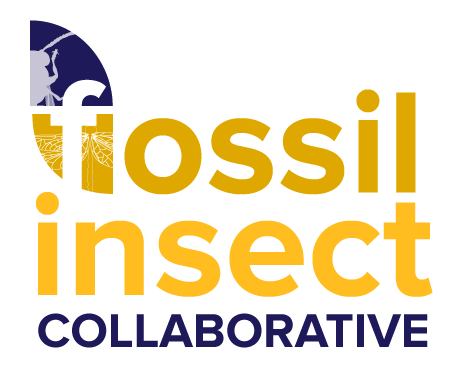-
Green River- Diptera (UCM 39492)
https://fossilinsects.colorado.edu/wp-content/uploads/slideshow-gallery/39492ucm.jpgCrane flies, or tipulids, can look like giant mosquitos, but don’t worry: many cannot even eat, never mind bite!
-
Green River- Coleoptera (UCM 44419a), Diptera (44420a), and Spider
https://fossilinsects.colorado.edu/wp-content/uploads/slideshow-gallery/ucm44419ahabitus-100mm-1-1.jpgAt the Green River Formation, many fossils can be preserved on the same sample of rock; a good day of collecting can produce hundreds of specimens!
-
Green River- Coleoptera (UCM 76170b)
https://fossilinsects.colorado.edu/wp-content/uploads/slideshow-gallery/76170bucm-1-4xtele-65mm-3-5x-diffuser.jpgBeetles have a hard outer pair of wings (elytra) that are usually preserved and a soft inner pair of flight wings that are usually not. This lucky specimen has both.
-
Green River- Coleoptera (UCM 75437)
https://fossilinsects.colorado.edu/wp-content/uploads/slideshow-gallery/75437ucm-1-4xtele-65mm-3-5x-diffuser.jpgCurculionids, or weevils, are beetles with hard snouts they can use to probe into materials to eat.
-
Green River- Thysanoptera (UCM 57131)
https://fossilinsects.colorado.edu/wp-content/uploads/slideshow-gallery/57131ucm-100mm-1-1-1-4x.jpgGardeners know of thrips as sap-sucking flightless pests, but some can fly and even be predators.
-
Green River- Orthopetra (UCM 56675b)
https://fossilinsects.colorado.edu/wp-content/uploads/slideshow-gallery/56675bucm-100mm-1-1-1-4x.jpgCrickets filled the night air with music 45 million years ago, just as they do today.
-
Green River- Formicidae (UCM 56642b)
https://fossilinsects.colorado.edu/wp-content/uploads/slideshow-gallery/56642bucm-65mm-3-5x-1-4x-copy.jpgAnts are a very diverse family of social wasps and are one of the most numerous non-microscopic organisms alive today.
-
Green River- Blattodea (UCM 56246)
https://fossilinsects.colorado.edu/wp-content/uploads/slideshow-gallery/56246ucm-100mm-1-1-1-4x.jpgFossil roaches are easily recognized by the short, stubby, antennae-like cerci (singular: cercus) sprouting off the end of their abdomen. One cercus is visible on the upper left of this specimen.
-
Green River- Coleoptera (UCM 49033) and Spider
https://fossilinsects.colorado.edu/wp-content/uploads/slideshow-gallery/49033ucm-habitus-100mm-1-1-1-4x.jpgNotice how much better the tough cuticle of the beetle is preserved compared to the soft cuticle of the spider next to it.
-
Green River- Auchenorrhyncha (UCM 45366a)
https://fossilinsects.colorado.edu/wp-content/uploads/slideshow-gallery/45366aucm-100mm-1-1-1-4x.jpgAlthough original colors are not preserved in Green River Formation insects, the patterns of these colors often are.
-
Green River- Hymenoptera (UCM 44933b)
https://fossilinsects.colorado.edu/wp-content/uploads/slideshow-gallery/44933bucm-1-4xtele-65mm-2x.jpgParasitic wasps are important controls on insect pests. Females use their long ovipositors to deposit eggs on or in their hosts.
-
Green River- Hymenoptera (UCM 44564b)
https://fossilinsects.colorado.edu/wp-content/uploads/slideshow-gallery/44564bucm-1-4xtele-65mm-3-5x.jpgBraconidae is a parasitic wasp family with thousands of known species and many more living and fossil species waiting to be described.
-
Green River- Diptera (UCM 44420a)
https://fossilinsects.colorado.edu/wp-content/uploads/slideshow-gallery/44420aucm-1-4xtele-65mm-3x.jpgPlecia is a march fly which today is common in subtropical and tropical latitudes. Since it is found in the Green River Formation, this suggests Colorado was warmer and wetter in the Eocene than today.
-
Green River- Auchenorrhyncha (UCM 44325)
https://fossilinsects.colorado.edu/wp-content/uploads/slideshow-gallery/44325ucm-1-4xtele-65mm-2x.jpgFlatidae, like all other planthoppers, drink plant sap from a straw-like proboscis, visible beneath the head on this specimen.
-
Green River- Diptera (UCM 44255)
https://fossilinsects.colorado.edu/wp-content/uploads/slideshow-gallery/44255ucm-1-4xtele-65mm-2x.jpgFossil mycetophilids, or fungus gnats, are instantly recognizable from their long first leg segments and the prominent spurs on their third leg segments. Both features are visible in this photo.
-
Green River- Coleoptera (UCM 42369)
https://fossilinsects.colorado.edu/wp-content/uploads/slideshow-gallery/42369bucm-100mm-1-1-1-4x.jpgCan you make out the legs superimposed on the body of this beetle? Compression fossils squash three-dimensional details onto a nearly flat plane.
-
Green River- Coleoptera (UCM 56875a)
https://fossilinsects.colorado.edu/wp-content/uploads/slideshow-gallery/ucm56875a-65mm-1-1-copy.jpgThe antennae and mouthparts of insects are actually derived from highly modified legs.
